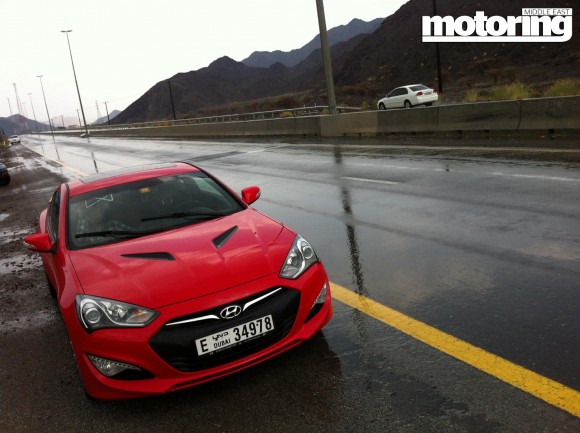Rain and fog driving tips
How to stay safe in unusual weather
By Shahzad Sheikh
As temperatures drop, we’re seeing more rain in the region, so here’s a few tips from British Road safety charity, IAM (Insititute of Advanced Motorists) that are worth heeding.
- Before you set off, set your a/c controls – rain can make the windows mist up in seconds. You don’t want to be fiddling with controls when you should be concentrating on the road. Use the rear demist feature – some cars also now have a front demist feature.
- Slow down. In the rain your stopping distance should be at least doubled. Giving yourself more space helps you to avoid spray, especially when following a large vehicle.
- Keep your eyes on the road ahead and plan your driving so that you can brake, accelerate and steer smoothly – harsh manoeuvres will unbalance the car.
- Strong winds can also unsettle your car and even change your direction of travel. Grip your steering wheel firmly and be aware of the effects of the elements on other road users, particularly motorcyclists and flat-sided vehicles.
- If you have cruise control, avoid using it on wet roads – it may create problems if you start to aquaplane.
- See and be seen. Put your lights on – as a rule of thumb, whenever you need to use your wipers you should also turn your headlights on, and before overtaking put your wipers on their fastest setting.
- Do NOT put your hazard lights on – these are only to be used in an emergency situation when you are stopped or to warn other drivers of an obstacle ahead and sudden braking. Any other use of Hazard lights can be confusing and misleading.
In cases of severe flooding, you should reconsider making the journey at all. If it is unavoidable, and you have to drive through deep water, the IAM recommends drivers take the following precautions:
- Drive on the highest section of the road and don’t set off if a vehicle is approaching you
- Leave time and space to avoid swamping other cars and pedestrians
- If you can’t see where you are going to come out of the water, such as when approaching flooding on a bend, think twice about starting to drive into it
- In deep water never take your foot off the accelerator, as this could allow water to travel up the exhaust pipe
- Once you’re out of the water, dry the brakes before you need them. The best way is to lightly apply the brake as you drive along for a few seconds, after checking nothing is following you too closely.
Peter Rodger, the IAM’s chief examiner, says: “A suddenly very wet road surface increases the chances of slipping when braking or steering, which is a problem not just for motorists, but cyclists and motorcyclists too.
“When driving in wet conditions remember that stopping distances will increase, and visibility will be reduced. Drop your speed and give yourself more time to slow down.”
Here are tips for driving in the fog from Rodger:
- Before setting off, clean your windows and windscreen and ensure all your lights are working.
- When you’re ready to leave, switch on the dipped headlights. Use front and rear fog lights if visibility is less than 100 metres, but don’t forget to switch them off when visibility improves – leaving fog lights on when headlights would be adequate is an offence.
- As mentioned above, do NOT use Hazard warning lights whilst on the move.
- Use your windscreen wipers on an intermittent setting to clear moisture.
- Set the air condition controls to keep the windows clear of mist and leave it running to keep the inside of the glass clear.
- Slow down and keep enough distance between yourself and the vehicle in front – make sure you can stop safely within the distance you can see clearly.
- Fog is not the same density all the time – it may get thicker, slow down if it does.
- Brake gently but earlier than usual so your brake lights warn drivers behind.
- Be aware that other vehicles may be travelling without their lights on, so extra care and attention is needed. At junctions, wind the window down and listen for traffic.
- Straining to see through thick fog will quickly make you tired – take regular breaks.
- Take high-visibility clothing in case you have to leave the car.
Rodger said: “Don’t underestimate the effect fog has on your visibility. Adjusting your driving to the weather conditions will help you to become a safer and more confident driver through the winter months.”
Drive safe people!




Shahzad,
Very informative. But do people follow any of these. This morning I was a witness to some very bad driving on Sharjah-Dubai Road. Drivers in their saloons racing through knee deep water…Crazy stuff…
Well that’s why we put this up – gotta keep pushing that message of safer driving across. Meanwhile be safe out there!
I like splashing water and I did that in an area where there were NO cars and people. With my saloon. I then understood the extreme resistance of water.
But behaved normal on flooded roads and tried to keep revs high in water logged areas by lowering gears.
Very useful information on right time. Thanks author.